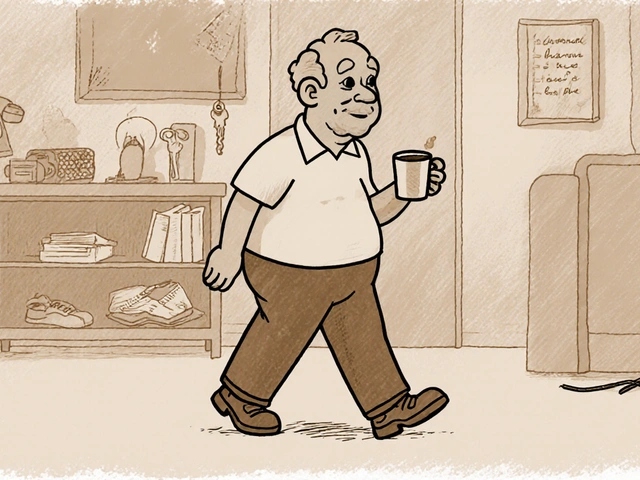Gabapentin Side Effects – A Practical Guide
If you’ve been prescribed gabapentin for nerve pain, seizures, or restless legs, you’ve probably wondered what side effects might show up. The good news is most people only notice mild symptoms, but it’s still worth knowing what to expect so you can act fast if something feels off.
Common Side Effects
Typical reactions show up within a few days of starting the drug. You might feel a little drowsy, get a headache, or notice some dizziness when you stand up. Some folks report mild nausea, dry mouth, or a fuzzy feeling in their mind – think "brain fog." These symptoms usually ease up as your body adjusts, especially if the dose is low at first.
Weight gain can happen over weeks, and a handful of people notice swelling in their ankles. If you’re taking other medicines that also cause drowsiness, the sleepy effect can turn into a full‑blown nap attack. Keep an eye on any rash or itching; while rare, a skin reaction could signal an allergy.
When to Seek Help
Most side effects aren’t emergencies, but a few red flags need immediate attention. If you develop a fast heartbeat, severe stomach pain, or trouble breathing, call your doctor right away. Mood changes are another big one – gabapentin can sometimes make you feel unusually depressed, anxious, or even trigger suicidal thoughts. Don’t ignore those feelings; a quick chat with your prescriber can adjust the dose or switch meds.
Serious allergic reactions look like swelling of the face, lips, or tongue and can happen quickly. If that occurs, go to the ER. Also, watch for signs of low blood sugar if you’re diabetic – gabapentin can mask some symptoms, making it harder to notice a hypoglycemic episode.Another concern is withdrawal. Stopping gabapentin abruptly after weeks of use can cause rebound seizures, anxiety, or insomnia. If you need to quit, taper the dose slowly under medical supervision.
Interaction headaches are common, too. Gabapentin mixes poorly with antacids that contain aluminum or magnesium; they can cut down how much of the drug gets absorbed. Alcohol and other depressants amplify drowsiness, so keep drinking to a minimum.
Here’s a quick checklist you can print or save on your phone:
- Start with the lowest dose your doctor recommends.
- Take the medication at the same time each day.
- Track any new symptoms in a notebook.
- Call your doctor if you notice rash, mood swings, or heart palpitations.
- Never stop suddenly without a taper plan.
For deeper dives, check out our recent posts that touch on gabapentin‑related topics. "8 Effective Alternatives to Neurontin in 2025" breaks down other options if side effects become a deal‑breaker. "Paxil: Uses, Side Effects, and Patient Experiences" gives a feel for how other nervous‑system meds can impact mood, which helps you compare. And if you’re curious about supplement safety while on gabapentin, "Cannabidiol and Self‑Care" discusses potential interactions.
Bottom line: gabapentin works well for many, but it’s not a one‑size‑fits‑all. Knowing the usual side effects, staying alert for serious warnings, and keeping open communication with your healthcare team will make the experience smoother. Remember, the goal is relief, not new problems, so don’t hesitate to tweak the plan if something feels off.





